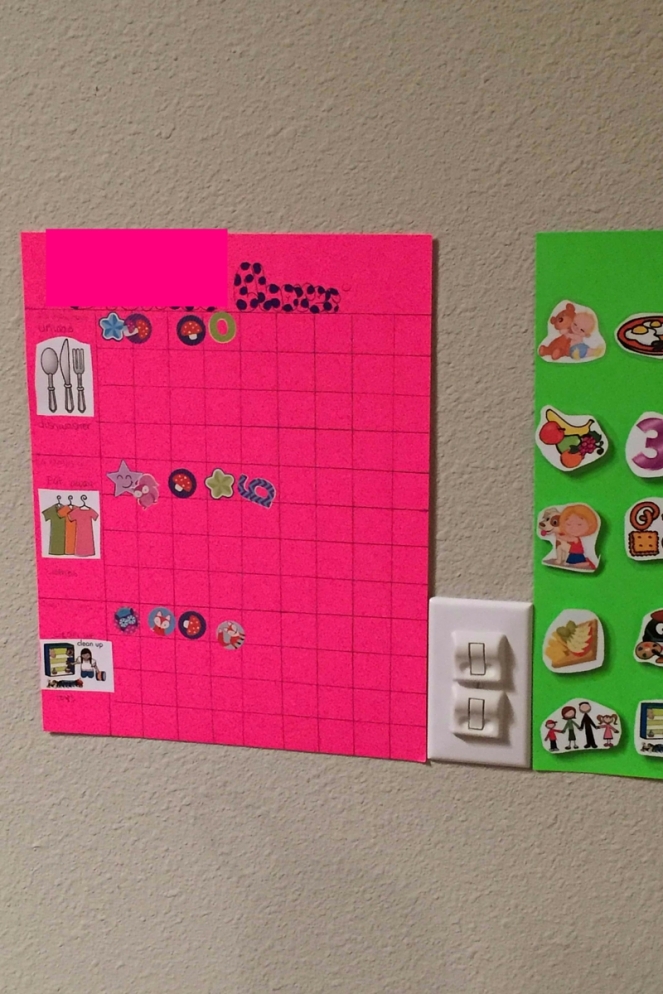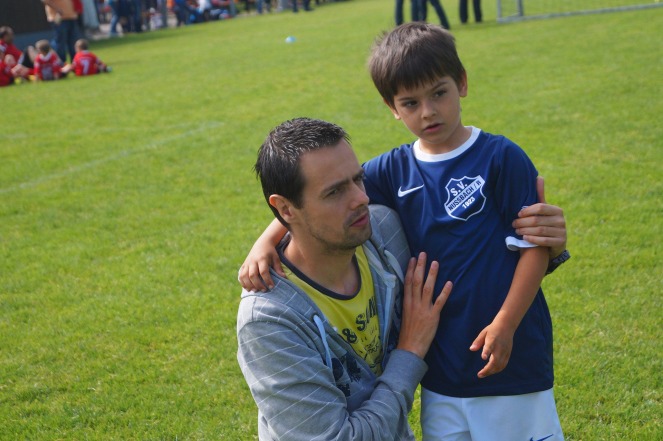
Maybe it’s my years of child care, maybe it’s my love of happy and successful families, whatever it is, I love watching Super Nanny. I probably watched most of the episodes (I haven’t seen many of the ones in the UK).
Before becoming a mom, I would watch the show and critique her methods (time out doesn’t work for everything). I still watch and critique her behavior management believes, but I also see that the parents on the show are there because they lack the tools and education to manage conflict and parent with power. For these parents, Ms. Frost’s positive parenting techniques are perfect. They are simple, can be learned easily, and teach parents to be the authority figure in a positive, non-threatening way.
For those who don’t know, Jo Frost has a new series: Super Nanny on Tour. She is traveling the country in a tour bus, visiting families and helping them become happier and more successful. She also holds public forums in various locations where parents can come to her for advice instead of a home visit.

Last night I was watching the newest episode and had the thought: What if Super Nanny came to my house? At first I thought we’d be great friends. After all we both have a lot of experience with children and parents, we both know a lot about developmental psychology, we both have a genuine dedication and love for happy and successful families. But we would also clash, I have different beliefs in behavioral management than she does (time out and I are not friends, acquaintances, yes, but friends, not so much).

A lot of people dislike her methods because they seem very one size fits all. She comes into a family, gives them a schedule to follow, sets up a reward system, and then teaches them how to utilize time out. The truth is, these things work because that is what families thrive on: consistency, positive reinforcement, and a behavior management system. If all parents could use these three things then there would be a drastic change in how children are raised.
Schedules:
Ms. Frost hand writes a schedule on a poster board then hangs it on the wall for the family to follow. I tried a few times to have this happen. Unfortunately it’s never worked. As a stay-at-home mom, my schedule is so different every day, one day we do grocery shopping, the next we go to the zoo. It’s hard to write a schedule on a poster board and stick it to the wall and have it work for everyday without it being seven different poster boards. The thought of having seven giant pieces of paper on my walls was dreadful. Not to mention how was Pea to know which poster to look at on which day.

My solution was to create the Velcro schedule. I googled clip art images of what I wanted for the schedule, printed and laminated them then stuck Velcro on the back. Some things never change, no matter what day it is (like waking up, eating breakfast, getting dressed, and so on). These things I glued to the poster. The day of the week, and changing aspects are removable. I hung it low enough for Princess Pea to have access to it. Every set out the parts of the schedule that are what need to happen (like what day it is, if we’re running errands, and so on). I have Princess Pea put them where they go. After the needs, I pull out the activity images. She can then fill in the blanks with realistic options like painting, nature walk, dance party and so on. For an added personal touch, you could take pictures of your child doing the activity and use those as your Velcro images.

Positive Reinforcement:
Ms. Frost has really cute ideas in the various episodes of Super Nanny for this. Sometimes it’s collecting marbles, sometimes it’s coins, or a pie chart. I love reward charts for the home setting (school setting not so much). With Princess Pea, I made a chore chart for her. She’s not two yet, so we only have three chores for now. She does do other things around the house, we just reward those with praise. The chores she has are helping unload the dishwasher (she just does the silverware and silicone utensils), putting her clothes away, and cleaning up her toys. Each time she does her chores she gets a sticker, nine stickers and she gets a big reward. She loves picking out which sticker she wants to put on her chart after each chore is completed.

Behavior Management:
This is probably the hardest aspect of the three. There are so many different things promoted by the “experts” that it is hard to know what is best for your family. The truth is, that is the key: What is best for your family. The method that I love the most, I learned in a behavior management class I had to take for my associates in early childhood education.
The method breaks everything into two categories: an adult problem or a child problem. An adult problem is when someone or something could get hurt or ruined. A child problem is a problem that causes issues for the child but doesn’t physically hurt or ruin someone or something.

For adult problems: Tell the child what they are doing/did, tell them why it is not acceptable, then tell them if they do it again what the consequence will be. It is vital the consequence fits the crime. That is the only way the child can make sense of what is happening. Here is an example: “Princess Pea, we do not jump on the couch. Jumping on the couch can ruin it and you could get hurt. If you do it again, you cannot be on the couch until Daddy gets home.” This would be the warning. If Princess Pea did it again, she would be on the floor until Daddy came home (following through teaches children to believe what you say). It’s important to give the warning to teach them what is acceptable and not acceptable. I often find myself giving Pea reminders about the couch still (do we stand on the couch?) this question format causes her to think about her choices and acts as a warning because she knows the couch rule.
For child problems: Child problems can be annoying and aggravating for adults too, but their child problems because they don’t directly affect you. I love this method because it helps children learn to be problem solvers. Step one: state the problem. Step two: identify the emotion they are feeling. Step three: have them brainstorm and experiment with possible solutions. If they’re young like Princess Pea, you can give suggestions of ideas to help them. Here’s the example: “I see that you want to play outside, but it is raining right now. What can you do?” wait for them to think… “Why don’t we build a fort” or “Even if we put on our rain gear, there is lightening so we cannot go outside, let’s think of something else.”

Superman and I advocate a lot of natural consequences where applicable. If Pea doesn’t want to go to bed, fine, but she will be in her room at bedtime and she will be woken up at the usual time and be awake until nap time in the afternoon. If she wants to wear her snow boots on a seventy degree day, then she’ll discover her feet get hot and sweaty.
Time out may seem a lot simpler and easier, but it doesn’t work for every child. Last time I put Pea in time out she began to lick the wall. Yeah, real effective. I only use time out when I am about to lose my temper and need Pea somewhere else where I can calm down and effectively parent.
The best thing about these methods is that they promote my own beliefs in development: Agency! I believe that all aspects of development are driven by our ability and understanding of making choices. I think it is more important to teach my children to make good choices than to choose for them. That is why for our family the schedule board, the chore chart, and the behavior method works for us!
What methods do your family use? What do you think works best?
I look forward to hearing about your family.


Hi, Katie, I don’t have children…just two dogs (please don’t tell them I said that 🙂 ). Having said that, as a social worker who works with children and adolescents, I found this post to be really interesting, and relatable…especially the problem-solving aspects. You write so well and your writings are very informative, pleasurable, and entertaining. Thanks for sharing 🙂
LikeLike
Thank you! Ever since I was twelve and started babysitting and nannying (for my piano teacher) I loved children. I have dedicated my life to helping parents and children. I thought about being a social worker, but I went to school to be an adoption therapist (never got my masters because Princess Pea, but I love being a stay at home mom). I just want families to be happy and successful. I applaud you as a social worker. I’ve been trying to get Superman on board for being foster parents for years now.
LikeLiked by 1 person